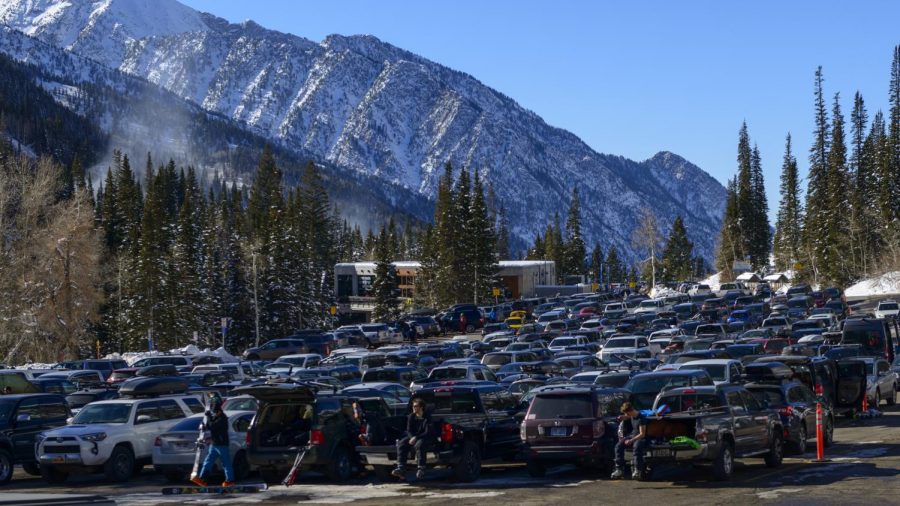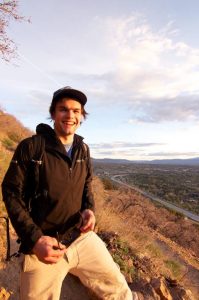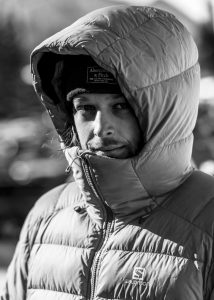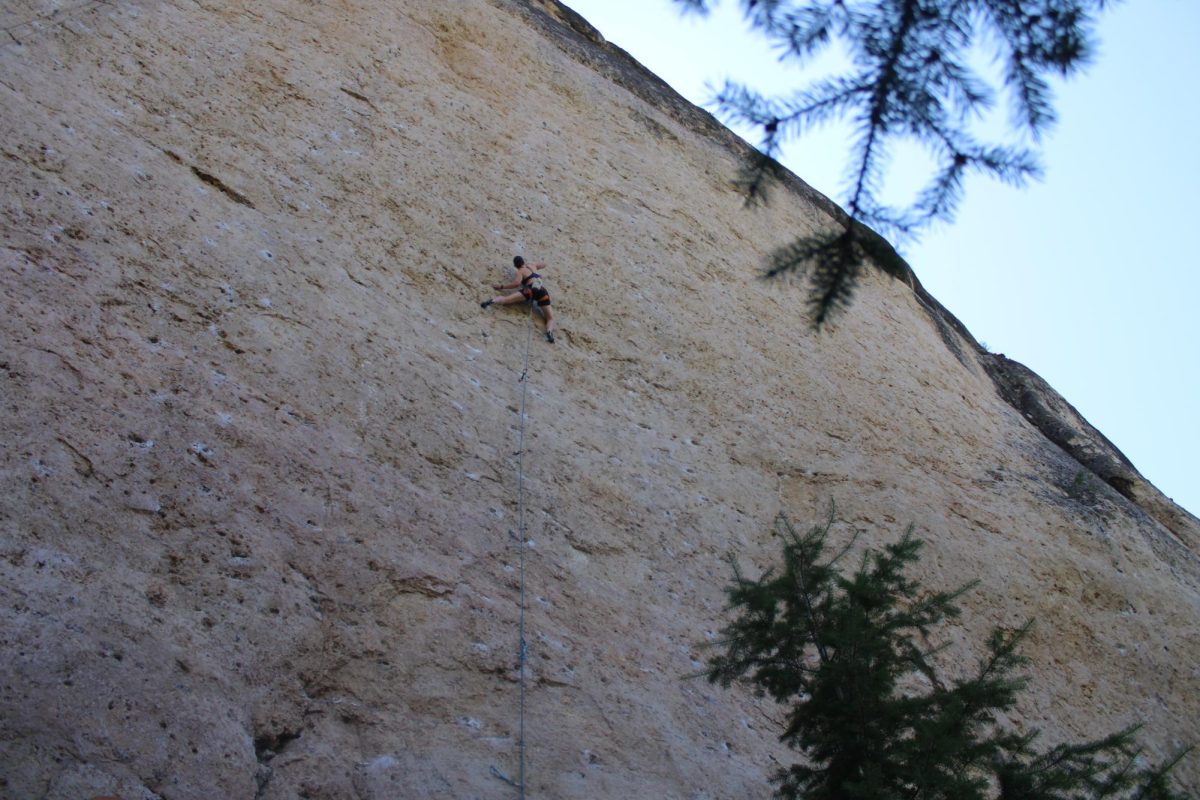“It sucks, but it’s the right thing to do”: A look at the abrupt end to the 2019/20 ski season
April 27, 2020
Ski season ended rather abruptly this winter.
The lifts at all Utah ski resorts are no longer running, their hotels are closed and scores of independently owned lodges, restaurants, rental shops and other businesses that rely on ski-tourism have followed suit.
This was bad news for those planning a March or April ski vacation, but it was even worse news for the thousands of seasonal employees working in the ski industry that were essentially kicked to the curb and who are still wondering how to make ends meet.
“A lot of people are super distraught about it,” said Kyle Stranick, the head chef at the Alta Peruvian Lodge, an independently owned hotel at Alta. “They’re like, ‘Wow, I’m pretty much homeless and jobless right now.’”
The Alta Peruvian is one of many businesses in the ski industry that gave employees, many of whom were expecting to have work until late-April, time to figure out employment and housing. Both Alta and Deer Valley allowed live-in employees to stay until the end of March, even though the resort is closed.
“They let employees stay until the end of the month … but no one got paid,” Stranick said, noting the closure triggered a mass exodus of seasonal workers.
Snowbird, Park City, Deer Valley and Solitude paid seasonal employees for their scheduled hours for an additional week, while Alta paid employees for the rest of March, according to resort statements and emails sent out to employees.
“It sucks, but I think it’s the right thing to do,” said Boris Yaworsky, an employee at the Goldminer’s Daughter, another independently owned lodge at Alta. “A few days ago, we were skiing with a job and a place to live, and 48 hours later we all got the boot.”
Yaworsky and others at the Goldminer’s Daughter described a chaotic scene in the hours Alta announced it was closing, with employees frantically packing suitcases and booking last-minute flights home as rumors of domestic travel restrictions spread.
Many resort employees spend the offseason working in the service or hospitality industry, so needless to say — many are anxious about where to find work in the coming months.
“I usually work in the service industry,” Yaworsky said. “Obviously there’s no employment there right now.”
While there might not be any work, there is a lifeline. Many ski industry employees joined the roughly 7 million Americans that filed for unemployment in March, an unprecedented number that some experts say is expected to rise.
“Individuals who are laid off for no fault of their own are most likely eligible for unemployment insurance,” said Kevin Burt, director of the Unemployment Division of the Department of Workforce Services.
The recent resort closures contributed to the nearly 30,000 Utahns that filed for unemployment insurance in the last week of March. But Burt, who was expecting a surge in applicants, isn’t concerned, mentioning that the unemployment trust fund “is in a better place now than it was in 2007.”
“Utah is designed to be able to weather a pretty significant impact or significant recession,” he said.
Utah’s ski areas are still scrambling to figure out a plan for the remaining winter months, and no resort has made any promises regarding season pass refunds.
Alta and Snowbird said they will reach out to pass holders at the end of April or early May. As far as what “reach out” means, well, your guess is as good as mine. Meanwhile, Brighton, Solitude and Deer Valley are still evaluating the situation and Vail Resorts is telling customers to apply for a refund on their website to be evaluated on a case-by-case basis.
While the rest of Utah’s resorts will remain closed until next season, Snowbird has not ruled out reopening. The resort ran the lifts during the Fourth of July last year and could reopen briefly this spring depending on how the next month pans out.
But unless Utah gets this brief and seemingly unlikely window of lift access skiing, anyone hoping to slide around on snow in the coming months will be relegated to the backcountry. While the traffic that plagued Big and Little Cottonwood canyons is now all but gone, any seasoned backcountry skier will tell you the trailheads are unusually crowded.
And a crowded backcountry can exacerbate the dangers of an inherently dangerous sport. As more and more people venture out on the skin track, it’s important to be considerate of those around you. This is the Wasatch, not the Yukon — there are very few places you can go where someone won’t be either above or below you.
“We have this huge population center next to the mountains and we have easy access,” said Mark Staples, executive director of the Utah Avalanche Center. “What that means is you just have to consider who’s below you or who might be above you … we’re not out in the middle of the wilderness by ourselves, so we all have to work together.”
In the wake of the global pandemic, Staples and the Utah Avalanche Center are urging backcountry travelers to dial back any risks. That burly, no-fall-zone line you’ve been waiting to ski all winter might just have to wait another year — not only could a backcountry rescue divert important hospital resources, but rescue crews might take a little longer than usual.
“On average we would have anywhere from 20 to 30 individuals at each ski resort that can respond to Wasatch backcountry rescues,” said Unified Police Sgt. James Blanton. But with the resort layoffs, Blanton said many ski patrollers, who typically volunteer for Wasatch Backcountry Rescue, have left the state.
“Now you’re looking at maybe two to five people from each resort if you’re lucky,” he said.
Blanton’s advice? Don’t go too far into the backcountry.
“I understand people want to get out and get going again,” he said. “But until this pandemic is over we don’t want to overburden our health care system because they’re already taxed as it is.”
So what do we do after such an abrupt and somewhat depressing end to the ski season? Be grateful! Grateful for all that pre-March powder we skied, grateful for all the warm and sunny spring-like days, grateful for all the time spent out on the slopes with friends and family, and, above all else, grateful we got to ski at all.












